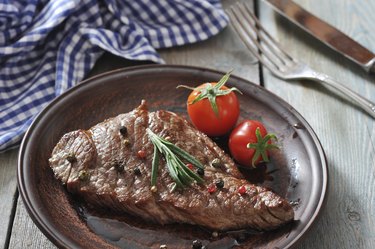
Most major retailers sell a variety of reactive dinnerware. The name does not describe a brand or function but rather the process used to achieve the color pattern of the dinnerware. Safe for food and ordinary use, this process is known as variegated glazing among the pottery community.
What Makes Them "Reactive"?
Video of the Day
The term "reactive" refers to the type of glaze on the dinnerware and not the dinnerware itself. The dinnerware does not possess any special properties causing it to "react" to the food placed on it. Rather, the glaze that created the coloration of the dinnerware underwent a chemical reaction during firing, usually melting or oxidation, to produce a particular pattern or variegation.
Video of the Day
What Does Reactive Dinnerware Look Like?
Reactive dinnerware often consists of two or more colors which blend together. For example a dark blue plate may fade to light blue at the edges. Since these are variegated glazes there is typically an under color that shows faintly through holes or cracks in the overlay color so that the dinnerware does not possess a "flat" color.
Artistically Speaking
Most commercially available reactive dinnerware uses a multilayering technique using two or three complementary colors; however, the possibilities of reactive glazes are endless for pottery artists.